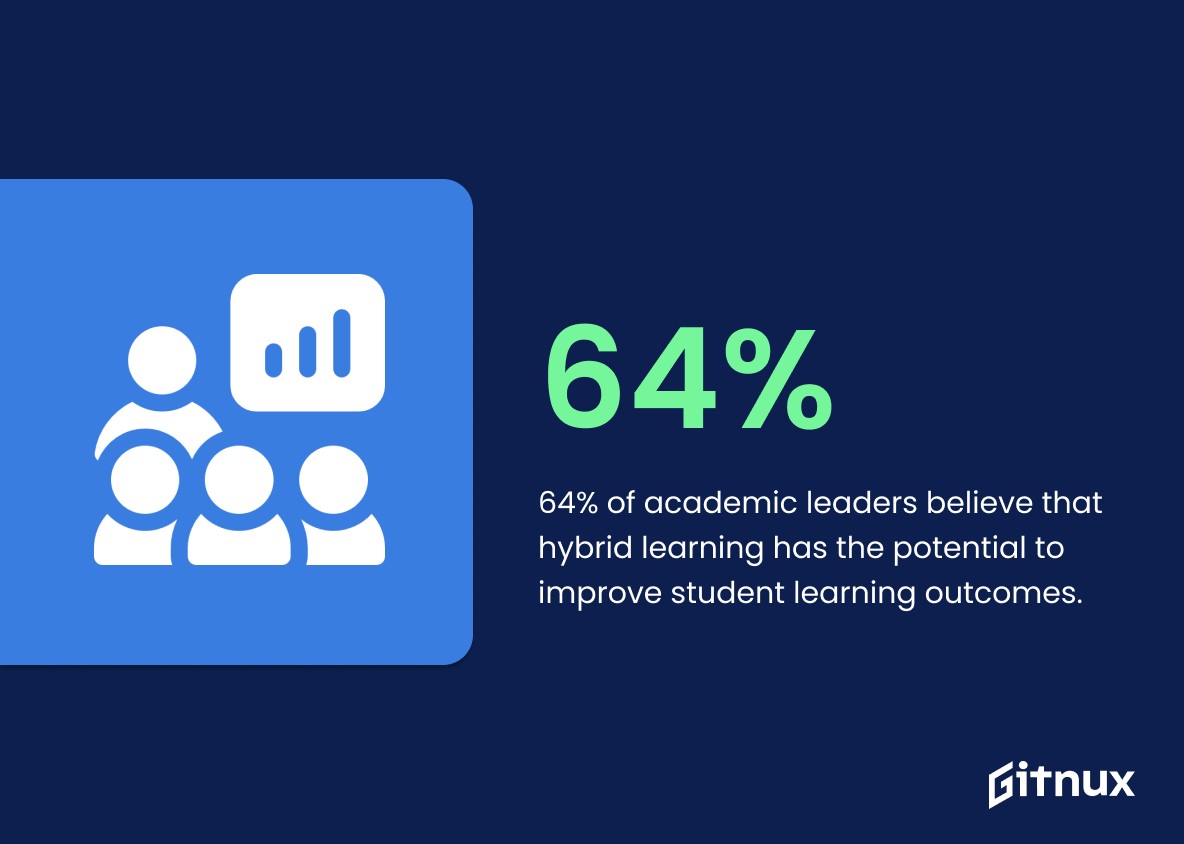Keeping students engaged in the classroom can be a challenging task for every teacher and school leader. However, there's an effective way you can improve the learning engagement and learning outcome of students which is the Hybrid learning method.
The hybrid learning method is not a new method and it’s here to stay in the future as well. According to gitnux.org, 64% of academic leaders believe that hybrid learning has the potential to improve student’s learning outcomes.

Some of the strategies that you might have used in the physical classroom are those that you can also use in the virtual classroom.
However, if you might be thinking about how you can create a perfect hybrid-learning environment with the use of specially designed instruction, then we have got you covered.
In this blog post, we will be sharing the most effective ways to create a hybrid-learning environment with specially designed instruction skills.
Before you move to the topic, can we ask you a quick question? Do you follow us on Social Media? If not, then you’re missing out on a lot of informative content. We regularly share upgraded educational content, tips, feedback, and more. Check us out by clicking the profiles here - Facebook / Twitter / LinkedIn / Pinterest / Instagram / YouTube
So, without any further delay, let’s get started.
What is Specially Designed Instruction?
The particular education that is given to children with a special need who have their Individualized Education Program (IEP) to help achieve their IEP goals and objectives is called Specially Designed Instruction. It is defined by the Individuals with Disabilities Education Act (IDEA) as adjusting the content, delivery style, or technique of teaching that suits the requirements of eligible children as appropriate.
It’s the target differentiation tactics service that has been specially designed to meet the requirements of children with different learning disabilities. It helps to remove the barrier in the inclusive classroom and provides every student with access to grade-level materials.
6 Best Ways To Create Hybrid Learning Using Specially Designed Instruction
Let’s get to know some of the best ways to create a hybrid learning environment using specially designed instruction:
Determine The Grade-Level Content
Start by determining the lesson’s general objectives, specifically about using scope and sequence’s overall curriculum progression. All of these learning objectives are for every learner regardless of the context.
Figure Out The Target Skills
Figure out which skills you want to teach your special needs students with learning disabilities and align them with your lesson plans. Skills and different abilities you must consider teaching your students first and when you are deciding how you are modifying your training.
For example- You might have to change the way of teaching reading methodologically depending on the learning goals whether it’s fluency or phonological awareness.
Finalize The Pre-Asessment Method
Before you can establish whether or not a student has gained the desired skills, you must first determine where they started. Pre-assessment procedures and tools may alter depending on the needs of the pupils. Use comprehension-testing methodologies to determine student’s baseline knowledge. Furthermore, depending on your school's curriculum, a range of fast screeners and other types of assessments can be used.
Learn, 8 Engaging STEM Activities for Kids that Will Foster Curiosity, here:
Figure Out The Method of Instruction
Diverse learners can be engaged in training through a range of modalities, speeds, presenting styles, and methods. If you are teaching both in-person and remote students at the same time, examine how grouping might be used to encourage involvement in a variety of settings. Learn more about Universal Design for Learning (UDL) to gain a better understanding of one approach to building an accessible curriculum. Many of the resources are technology-based, hence UDL approaches can be very beneficial in remote and hybrid modes of teaching and learning.
Adapt Your Instruction Method
Above and above the differentiation in the lesson plan that applies to all students, some children with disabilities will readjustment squire or revisions. These may be included in a student's IEP, or you may need to come up with something unique, particularly in a hybrid situation. Once customized tweaks have been made, zoom back out to see how those changes may help other students if they were implemented more widely in the classroom.
Check Student’s Understanding By Planning Assessment Types
After sharing, the effective mastery requirement with students if you instruct them to self-evaluate their learning then the result might surprise you. Hybrid instruction techniques made it possible to the utilization of various techniques like-
- Conferences
- Performance tasks
- Presentations
- Observations
To assist your students in demonstrating comprehension, technology-based accessibility aids such as dyslexic fonts, text to read, and colour contrast might be helpful.
Engage Students With Hybrid learning & Specially Designed Instruction
Keeping your special needs students with different learning abilities can be a challenging task for every educator and school leader. However, with the above-mentioned 6 of the best strategies to create hybrid learning with specially designed instruction, you can help improve learning outcomes and engagement of your students with different learning disabilities.
If you want to learn more effective strategies and methods to help your school’s special needs learners, then consider pursuing courses like Diploma in Educational Administration and Management, where you will get guidance from top expert trainers.
We believe education should be accessible for everyone. That’s why we don’t charge for our blogs. Find the right course that will help you in your career with us, contact us at - 1800–212–6400. You can mail us at act@asiancollegeofteachers.com









